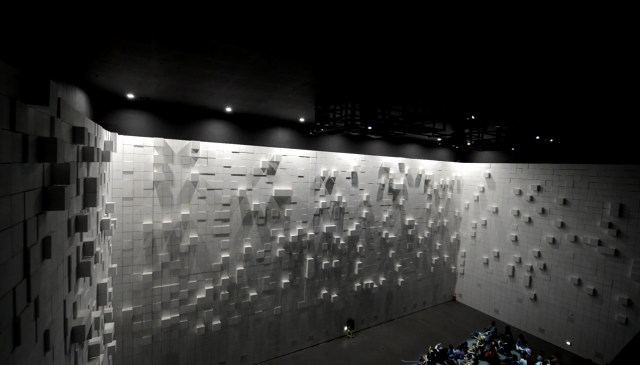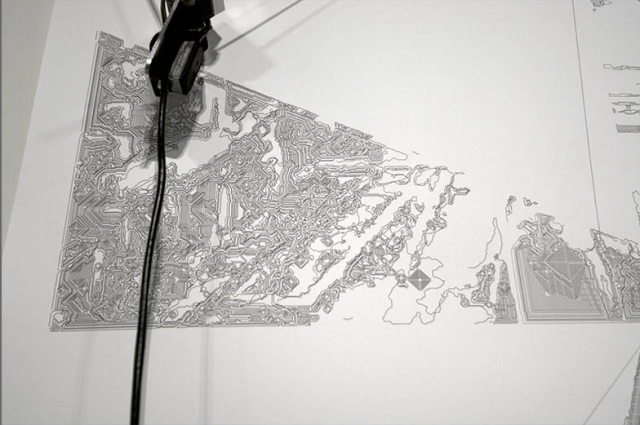Looking Outwards
Project that Surprised Me – Hyper-Matrix by Jonpasang
The Hyper_Matrix by Jonpasang really surprised me at the time. It is a kinetic 3D matrix landscape that is created by the Jonpasang, a media artist group based in Korea funded by the Hyundai motor group in 2012. The installation consists of motors that control small blocks which creates shapes and landscapes.
I actually had the chance to be at the exhibition in 2012 so this was very surprising to me at the time. The seemingly pixelated patterns were abstract but it was new and interesting in its own ways. This blocks and motors had redefined the space and it transformed the place into a whole different place.
Project that Inspired Me – Petting Zoo by Minimaforms
I was inspired by the Petting Zoo by Minimaforms, which is a experimental architecture and design studio. The Petting Zoo is speculative life like robotic environment. The artificial intelligence creatures have developed to learn and explore the behaviour through the interaction with the participants.
The idea that this creatures the so called ‘pets’ develop their own behaviours as they interact more with the participants was really inspiring and intriguing idea to me, since almost every living creature learn as they experience over time. This broke my ideas of robots and rather gave me a second chance to think about it. Also I think the interaction between the two makes people feel intimacy and curiosity at the same time.
Project that could have been better – Turn Signal Biking Jacket
This project was not done by a group of artist but rather one person who was figuring out a way to bike a little more safer at night. When the biker turns left or right she can tell the person behind where they are going. Since it was not a big scale project and rather a personal project there are limitation compared to other projects but I think this has potential in becoming something useful to daily life.


